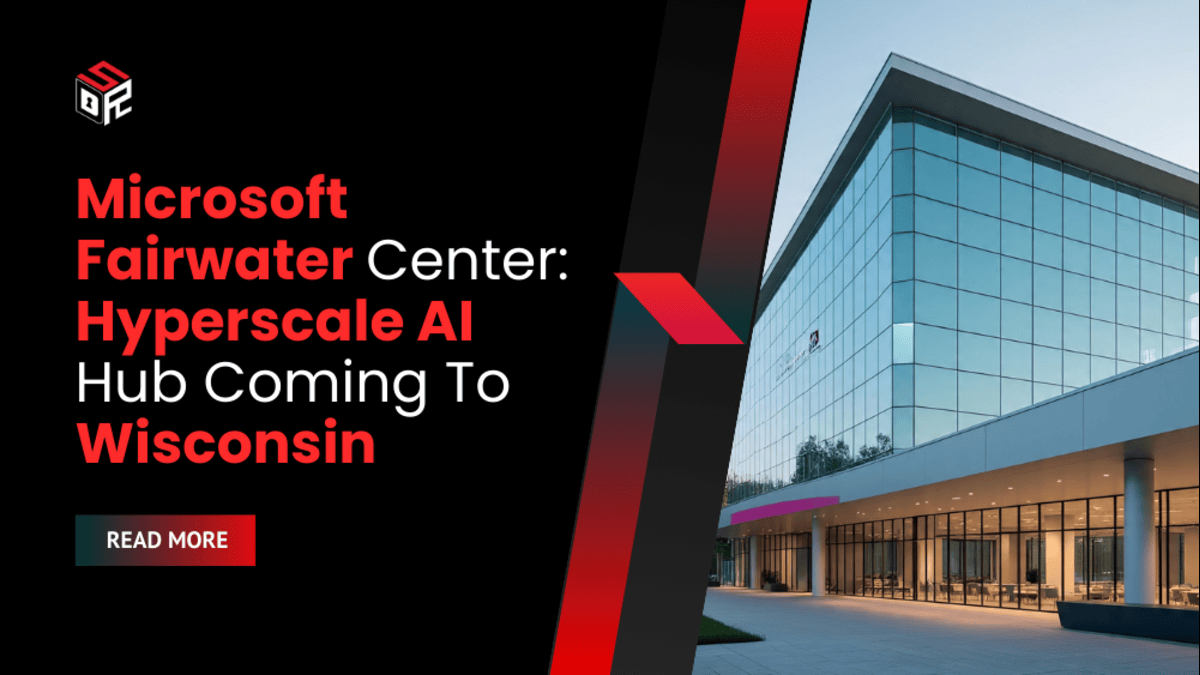Microsoft is moving to expand its AI infrastructure with a major build in Mount Pleasant, Wisconsin. The Fairwater project — billed by the company as a hyperscale AI data center — will host clustered GPU arrays for training large models and aims for operational sustainability at scale.
Project Scope and Investment
Microsoft is investing roughly $3.3 billion in the Mount Pleasant Fairwater site and has announced a second, similar facility in Wisconsin that brings the state commitment to more than $7 billion. The first data center is scheduled to enter service in early 2026. Hiring is already under way for full-time operations, engineering, and facilities staff who will manage the site once it opens.
The facilities are explicitly designed for frontier AI workloads. Microsoft says the centers will house hundreds of thousands of NVIDIA GPUs arranged in high-density clusters and connected with large-scale networking. The company claims the Fairwater site will deliver performance comparable to, or exceeding, the fastest supercomputers available today.
Engineered for AI at Scale
Fairwater is built around large GPU clusters and dense interconnects that support parallel training of large language models and other generative AI systems. Microsoft reports the internal fibre-optic network at the site would span enough cable to circle the globe multiple times, a detail intended to convey the scale of the network fabric and the bandwidth available between GPU pods.
The site is positioned as a training ground for research and engineering teams to iterate on model design and test production workloads. Microsoft frames the data center as a platform for innovation in fields such as drug discovery, science, and other AI-driven workloads that require sustained, large-scale GPU compute.
Sustainability and Cooling Strategy
Sustainability is a central element of the project. Microsoft says more than 90 percent of the site will use a closed-loop liquid cooling system that is filled once during construction and then continuously recirculated. The remainder will rely on outside air cooling and switch to limited water use only in peak heat periods.
Despite the scale, Microsoft projects modest annual water consumption for the site, comparing it to the yearly use of a single restaurant or the weekly summer water usage of an 18-hole golf course. The company also states it will prepay for the energy and infrastructure the center uses to avoid upward pressure on local electricity prices and will match fossil fuel energy consumed with carbon-free energy returned to the grid.
Community and Workforce Commitments
Microsoft highlights expected local benefits, including construction employment, long-term IT and site operations roles, and training opportunities. The company has partnered with Gateway Technical College to launch a Datacenter Academy in Wisconsin, intended to prepare students for data center careers and local hiring pipelines.
Timeline and Operational Notes
Construction at Fairwater is in its final stages with the facility slated to come online in early 2026. Microsoft’s second planned data center in the state follows the same hyperscale and sustainability design principles. The company emphasizes that these sites are built for AI model training and continuous operation while seeking to limit local environmental impacts and maintain stable energy prices for nearby communities.









